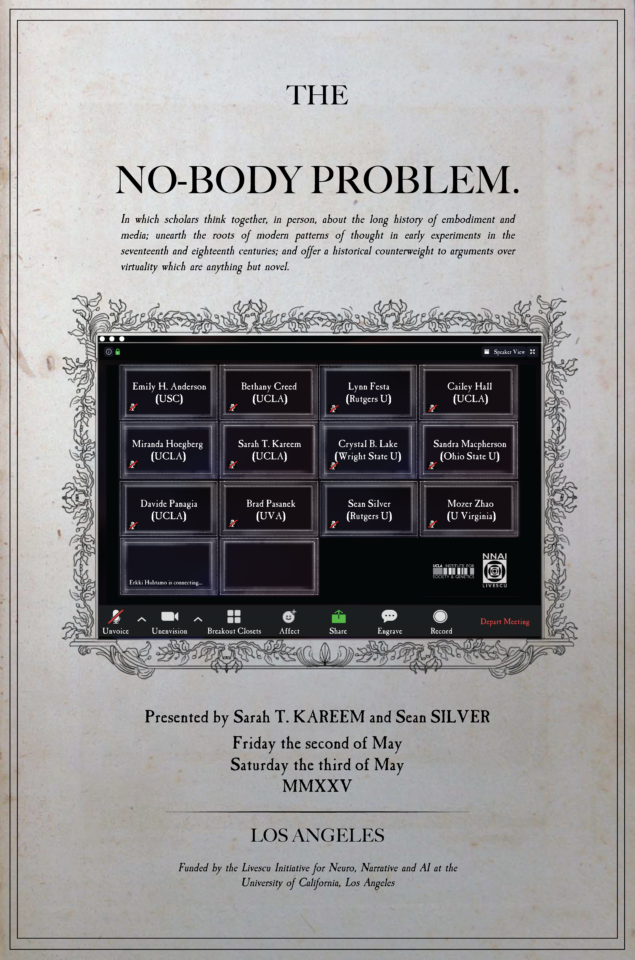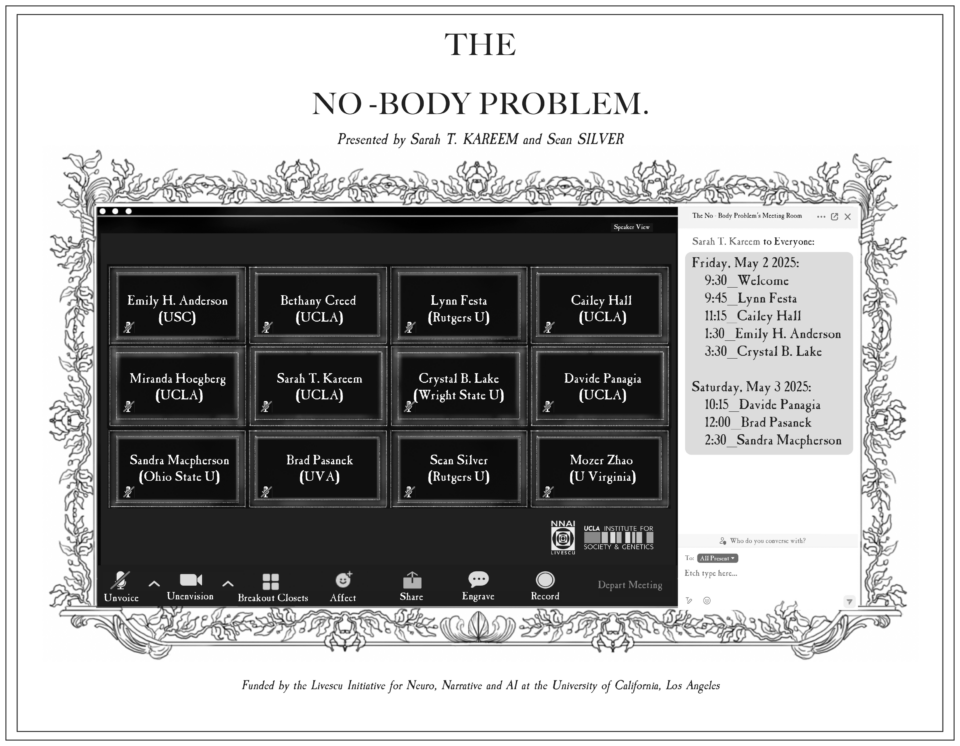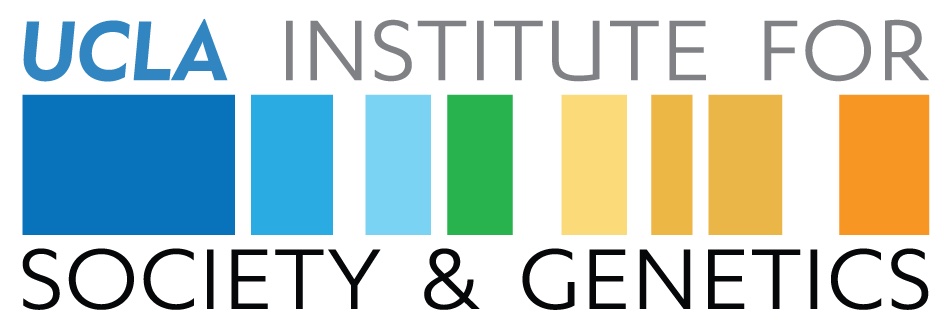
What does it mean to think collaboratively without the body? “The No-Body Problem” is the heading under which NNAI is holding a series of events—including a 2-day workshop, a symposium, and a public lecture—at which we will gather, in person, to consider this question.
Organized by Sarah Tindal Kareem (UCLA) and Sean Silver (Rutgers), the title of the “No-Body Problem” means to position this inquiry around a number of academic approaches to bodies in space—beginning with the forms of disembodied assembly prompted by the “two-body problem”: that old academic joke about the hazards and compromises encountered by academic couples. Historically, the solution to the two-body problem seemed extraordinary; it generally involved physical separation, or relationships conducted across geographical distance. The new modern regime of distance work seems to us to be encoding and normalizing disembodied relationality, which always seemed extraordinary before.
What happens (we ask) to our individual experience or the kinds of knowledge that can be won when our work is no longer meaningfully tethered to the embodied conditions that accompany classical exchanges of thoughts, skills, and knowledge? It is not only exchanges between two people that are at stake; also changing are complex systems (like whole fields of academic research) whose classical expression is the so-called “three-body problem,” the apparently insoluble astrophysical scenarios that emerge whenever a third body is introduced in a system of two. We also mean, that is, to discuss how complex social systems are differently disrupted or changed when embodiment is abstracted, or when they are forced to conduct their work remotely.
We come to this inquiry as twenty-first-century dix-huitièmistes; from our vantage point, “No-bodyness” has accompanied questions of distance and communication since the emergence of modern media. “The No-Body Problem,” then, also names a cluster of concerns that emerge from the proliferation, in the eighteenth century, of new forms of remote media–epistles, periodicals, novels–the very forms of which engaged the question: how do utterances operate differently when there is nobody there to utter them? As scholars, we are intimately acquainted with disembodied media’s roiling effects on eighteenth-century life; as teachers at institutions of higher education in 2025, disembodied media is now roiling our own lives in and out of the classroom. Part of the work of this workshop, then, will be to think collectively about what these two historical moments have to say to each other, and how we can think more capaciously, critically, and creatively about what attending to them together can teach us about our own value, and values, as humanists.





